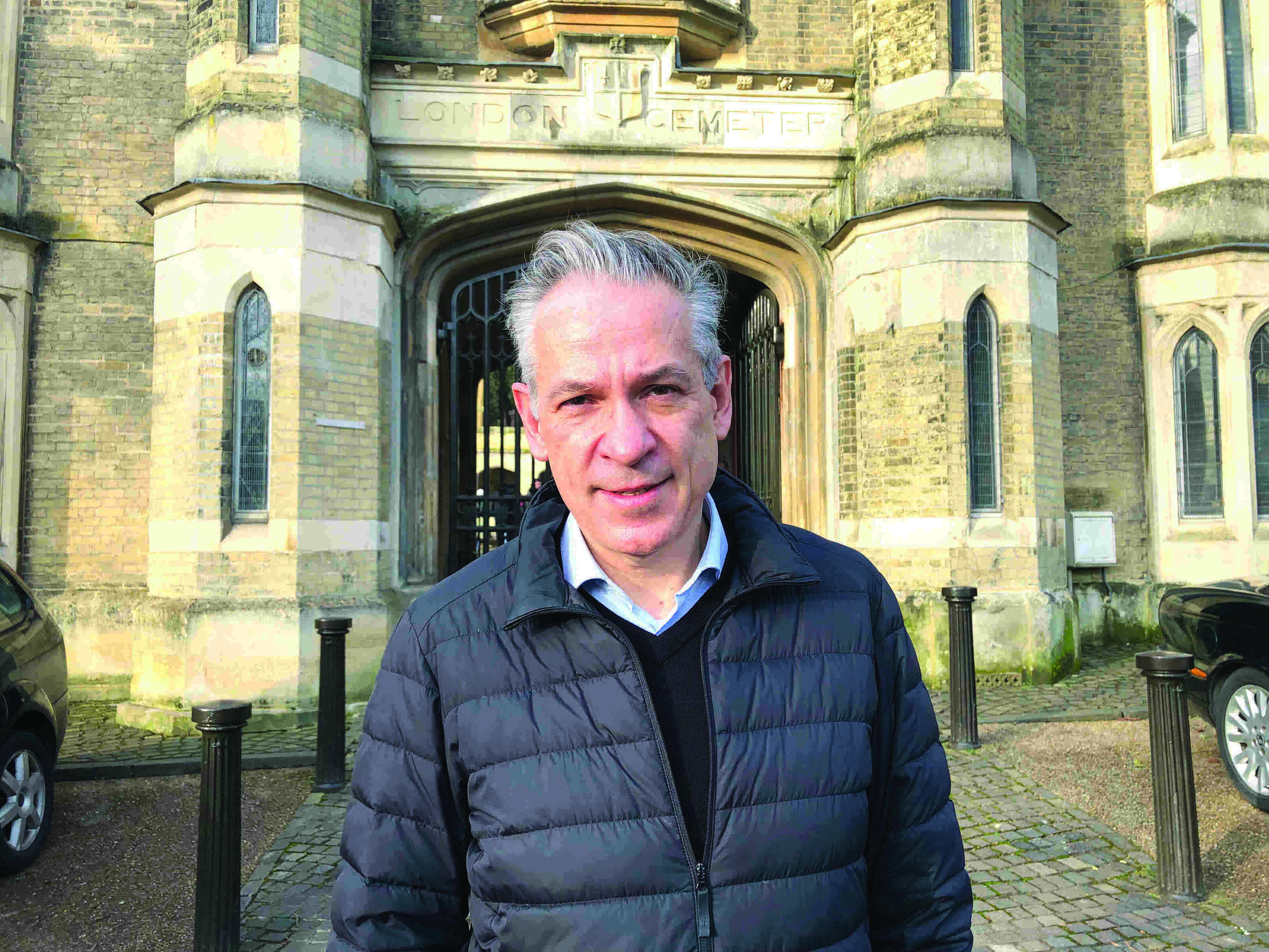‘Why we want to double up on your ancestors’ graves’
Highgate Cemetery will consult families to free up space
Friday, 26th January — By Dan Carrier

Dr Ian Dungavell
NEARLY 500 new graves could be created at the historic Highgate Cemetery – if descendants of people buried there a century ago give the plans a blessing.
The change, which requires an Act of Parliament, would see a number of unmarked graves as well as burial spots with clear ownership reused.
Gravediggers will carefully dig down until they reach the remains, make the grave lower and create space so new bodies can be laid to rest in tiers on the same spot.
It helps the cemetery, which is run by a charity, financially but also gives the land a purpose, according to cemetery chief executive Dr Ian Dungavell.
He said: “Most of the graves we are looking at were registered in the 1860s up to the 1900s, and around 50 have no memorial or headstone.
“There is little space left at the moment, but the cemetery is enhanced by being used for burials today. Using the cemetery as a continued place of burial stops it declining into a park with monuments. We want to ensure the character – a palace of tranquillity, of quietness, of contemplation – continues.”
Dr Dungavell said grave owners have until July to respond with an opposition to their plots being reclaimed. Currently 470 plots are under consideration, and so far just one family – of a man who died in 1903 – has come forward to object.
The cemetery in Swain’s Lane was fashionable for Victorians, and remain so today. It is the last resting place of philosopher Karl Marx, author Douglas Adams, artist Patrick Caulfield, Great Train Robber Bruce Reynolds, music impresario Malcom McLaren, and singer George Michael. There is also corner dedicated to London Fire Brigade workers.
When the cemetery was established in the 1800s, grave owners were granted their plots for ever. But it was not always the case, explains Dr Dungavell, as churchyards would regularly reuse plots.
He added: “It is common in Europe to have a number of burials in one plot, and before the 19th century in the UK it was normal for graves not to be individually owned.
“In many churchyards it was seen as symbolising how ‘we are all one family under God’.” With graves costing £25,000 each and the income important to keeping the historic space well maintained, there are fears that the cemetery would become solely the preserve of those who were well off in their lifetime. But the cemetery is also looking at using two Victorian vaults as a possible repository for people’s ashes, with costs possibly being in the low £100s.
The new graves scheme comes as the cemetery learned this week it had won a £106,000 grant from the Heritage Lottery fund as seed money to put together a much larger project costing £6.7m.
Dr Dungavell said the money will be for restoring and maintaining a swathe of listed monuments, improving biodiversity, and offering visitors an information centre, toilets and cafe.